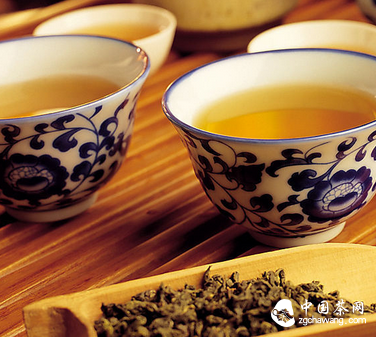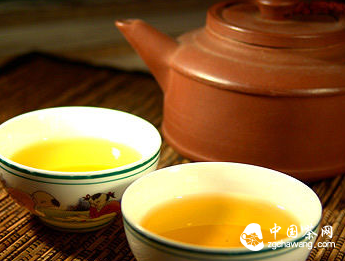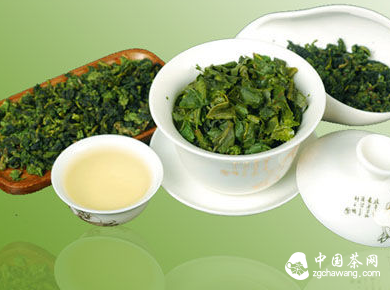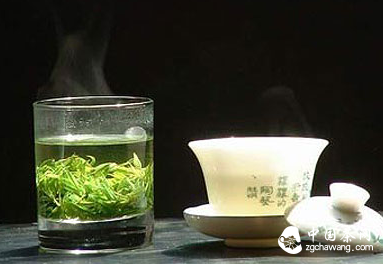
1. Are the bubbles in the first brew of tea harmful?
Truth: False
Explanation: When brewing the first pot of tea, a layer of "foam" often floats on the surface, which some mistakenly believe is pesticide residue or impurities. In fact, this foam is not only harmless but also beneficial to the human body, as it is produced by tea saponin in tea leaves. Scientists have confirmed that tea saponin has antibacterial, anti-inflammatory, and antioxidant effects. In ancient times, this white foam was regarded as an essence, as Du Yu wrote in his poem: "Glistening like accumulated snow, shining like spring blossoms."
2. Does strong tea sober you up?
Truth: False
Explanation: Some people believe that drinking strong tea after alcohol consumption has a "sobering" effect, but this is a misunderstanding. Tea has the effect of exciting the nerve center. Drinking strong tea after drunkenness will increase the burden on the heart. Drinking tea also accelerates diuresis, causing toxic aldehydes from alcohol to be excreted from the kidneys before being broken down, which can greatly irritate the kidneys and endanger health. Therefore, people with heart or kidney diseases or poor function should not drink tea, especially large amounts of strong tea; for healthy people, they can drink a small amount of strong tea, and after清醒 (becoming clear-headed), they can use methods such as eating a lot of fruit or taking small sips of vinegar to speed up the body's metabolism and alleviate drunkenness.
3. Is 'pure material' Pu'er completely unblended?
Truth: False
Explanation: The concept of "blending" for Pu'er tea specifically includes six aspects: grade blending, tea mountain blending, tea variety blending, seasonal blending, year blending, and fermentation degree blending. What many people refer to as "pure material" means it is made from tea leaves from the same tea mountain and the same season, which accounts for only two items in Pu'er tea blending technology. Therefore, one cannot simply think that "pure material" Pu'er has undergone no blending at all.

4. Is washing tea meant to rinse off tea dust?
Truth: False
Explanation: Many people think that washing tea is to rinse off unclean impurities in the tea leaves, such as tea ash or dust, but this is not the case. In most situations, the main purpose of "washing tea" is to moisten the tea leaves, help them unfurl and the tea juice to seep out, allowing the drinker to quickly perceive the tea's fragrance. Some tea lovers prefer to call it "awakening the tea," "moistening the tea," or "warming the tea."
5. Does old Tieguanyin need regular re-roasting?
Truth: False
Explanation: Some tea friends believe that aged Tieguanyin must be regularly re-roasted with high fire to have storage value. However, they do not realize that if aged tea undergoes firing multiple times, the leaf base will carbonize, and the resulting drink will taste thin and hollow, losing the true flavor of aged oolong. If stored properly, aged tea does not need re-roasting.
6. Does leaving leftover tea in the pot help nurture the pot?
Truth: False
Explanation: Leftover tea should not be left in the pot. Overnight tea soup will develop a stale flavor, which can seep into the body of the pot. This not only fails to help nurture the pot but actually damages the Yixing clay teapot. Drinking tea from a pot nurtured in this way is harmful to health.
7. Should Yixing clay teapots not be used to brew green tea?
Truth: True
Explanation: Premium green tea is brewed at a relatively low water temperature, around 85 degrees Celsius. Excessively high temperatures and long steeping times will destroy the flavor of green tea, so it is generally not recommended to use Yixing clay teapots to brew green tea. When options are limited, one can consider using a Yixing teapot to steep green tea for a short time and immediately pour out the tea soup, and the lid should be opened during brewing.
8. Is Dongting Biluochun produced at Dongting Lake?
Truth: False
Explanation: Dongting Biluochun, one of China's top ten famous teas, is a green tea actually produced in Dongting Mountain, Tai Lake, Suzhou City, Jiangsu Province, and not from Dongting Lake.

9. Is 'Anji White Tea' a white tea?
Truth: False
Explanation: Anji White Tea is not a white tea; it is a green tea made by processing albino buds and leaves using green tea techniques. Every spring, low temperatures hinder the synthesis of chlorophyll in the new leaves of the "Anji White Tea" tea plant, causing阶段性 (periodic) albinism. The tea leaves during this stage have very high amino acid content, which ensures the fragrant aroma and fresh, mellow taste quality of Anji White Tea.
10. Is West Lake Longjing always green?
Truth: False
Explanation: Consumers have a misconception that good Longjing must look pretty and that green tea must be green. Actually, the quality of West Lake Longjing lies in: 1. Taste: sweet aftertaste; 2. Aroma: unique bean fragrance; 3. The shape in the cup after brewing... Moreover, good Longjing dry tea will be green with a yellowish roasted rice color.
11. Are color-changing tea pets toxic?
Truth: Not necessarily
Explanation: Color-changing tea pets are generally temperature-sensitive变色 (color-changing) tea pets, made mainly from resin. These tea pets immediately become colorful when sprinkled with hot tea water and return to their original color when cooled. Alternatively, they can be made by coating fired tea pets with a chemical material that changes color when heated. Color-changing tea pets are fine for playing with, but it's best not to sprinkle tea water on them during tea drinking. The chemical agents in the clay material of the tea pet, when sprinkled with tea water and reacting to high temperatures, can easily produce toxins harmful to the human body.
12. Are teas with fuzz all good teas?
Truth: False
Explanation: "Can it be called good tea without tea fuzz?" This advertising line by Lin Chi-ling led many to believe that teas with fuzz are good teas, but this is not the case. The commonly called tea fuzz is tea hair, also known as trichomes. It is the fine fuzz on the tips of tea buds, containing rich nutrients such as theanine and tea polyphenols. Generally, the more tender the fresh leaves, the more tea hair there is, so this indicator is often used as an important measure of tea tenderness. However, the quality of tea is not determined by the amount of tea hair. Many teas have tea hair, especially green teas and black teas, like Maojian. But this cannot be generalized for all teas. For example, Longjing tea undergoes a process called Hui Guo (pan-firing) during processing. The purpose of Hui Guo is mainly to dry the tea leaves and promote the further formation of aroma substances, but it also has the purpose of磨掉 (grinding off) the tea hair on the surface of the leaves to form its unique quality characteristics. Therefore, the tenderness of Longjing cannot be determined by the amount of tea hair.
13. Matcha is not green tea
Truth: False
Explanation: Matcha - a Japanese quintessence originating from China - differs in form from the common green tea found domestically, but it is also a type of green tea. Matcha is a pure natural, steam-treated, ultra-fine powdered green tea. It is made from tender tea leaves that undergo high-temperature steam kill-green and special processing before being instantly crushed into a pure natural tea steam-treated ultra-fine powder of 200 mesh or above,最大限度地 (maximally) preserving the natural green color and nutrition of the tea leaves.

14. Green tea powder is not matcha
Truth: True
Explanation: Matcha is different from ordinary green tea powder and is not simply crushed tea leaves. Matcha powder is made from high-quality fresh green tea through steam kill-green, stone grinding, ultra-micro pulverization, and low-temperature drying. Moreover, matcha has high requirements for raw material quality, requiring tea leaves with high amino acid, protein, and chlorophyll content, while also requiring low caffeine content. The raw material for green tea powder is basically ordinary roasted green tea, which is then simply pulverized into green tea powder using instant crushing methods.
15. Is fresher tea always better?
Truth: False
Explanation: New tea refers to tea picked less than a month ago. This tea is superior in shape, color, and taste, and drinking it is indeed a pleasure. However, because the storage time of the tea leaves is too short, the content of polyphenols, alcohols, and aldehydes is relatively high, which has a strong irritating effect on the human gastrointestinal mucosa and can easily induce stomach problems. Drinking new tea for a long time can cause symptoms like abdominal pain and bloating. At the same time, new tea also contains highly active tannic acid, caffeine, etc. Excessive consumption of new tea can highly excite the nervous system, leading to "tea drunkenness" phenomena such as limb weakness, cold sweats, and insomnia. Therefore, new tea should be drunk sparingly, and tea stored for less than half a month should be avoided.
16. Drinking tea with milk causes osteoporosis
Truth: False
Explanation: There is a saying that the tannic acid in tea can combine with the calcium in milk, reducing intestinal absorption of calcium and leading to osteoporosis over time, but this is not true. Compared to vegetables, tea is not the main source of tannic acid. A brew of tea contains 4-6 mg of tannic acid. A half cup of milk contains about 120 mg of calcium. The loss of dissolved calcium is less than one-tenth and cannot cause osteoporosis.

17. Can tea drinking replace drinking water?
Truth: True
Explanation: Fluoride in tea is a beneficial trace element for the human body within the appropriate intake range. It helps deposit calcium and phosphorus in bones, accelerates bone growth, and has health benefits such as maintaining bone health and preventing dental caries. However, excessive intake may lead to fluorosis. The Chinese Nutrition Society recommends that adults should intake 1.5 mg - 3 mg of fluoride per day. Therefore, one cannot replace water with tea. Drinking 4 cups of tea and 4 cups of water is more appropriate.
18. Does drinking tea raise blood pressure?
Truth: False
Explanation: Tea has effects such as anticoagulation, promoting dissolution, inhibiting platelet aggregation, regulating blood lipids, increasing high-density lipoprotein in the blood, and improving the ratio of cholesterol to phospholipids in the blood. It can prevent the deposition of lipid masses like cholesterol on blood vessel walls, thereby preventing coronary artery narrowing. Especially, tea contains catechins, which can reduce cholesterol levels in the human body, subsequently lowering blood lipids and thus reducing blood pressure. Therefore, drinking tea can prevent and treat cardiovascular diseases.
19. Junshan Yinzhen and Weishan Maojian belong to the green tea category
Truth: False
Explanation: Xinyang Maojian, Jiukeng Maojian, Duyun Maojian, etc., are green teas. Do not mistake teas with "Maojian" or "Zhen" (needle) in their names for green tea. Junshan Yinzhen and Weishan Maojian are both yellow teas, not green teas.
20. Is the homeland of tea China?
Truth: Absolutely true
Explanation: Some舆论 (public opinion) believes that India is the homeland of tea. In fact, China was the first country to discover and utilize the tea plant. Written records indicate that our ancestors began cultivating and using tea plants over 3,000 years ago. At the end of the 19th century, the Englishman Wilson wrote in "Travels in Western China," "On the slopes of north-central Sichuan, I once saw wild tea bushes commonly about 10 feet tall." This was the first report of the discovery of wild tea trees in China. The history of tea production in places like India is less than two hundred years. Therefore, the place of origin of the tea plant is, without a doubt, China.